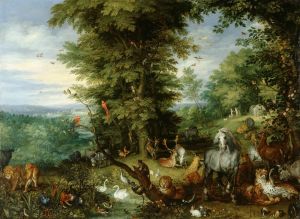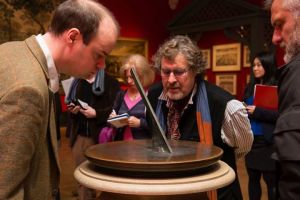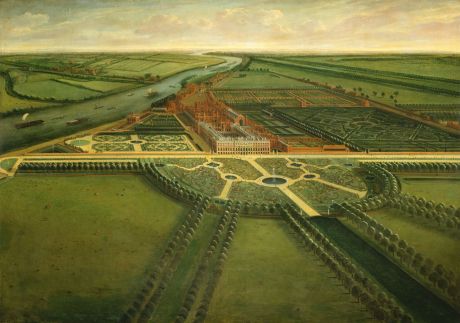Painting Paradise
March 24, 2015
Painting Paradise: The Art of the Garden explores the many ways in which the garden has been celebrated in art through over 150 paintings, drawings, books, manuscripts and decorative arts from the Royal Collection.
The exhibition runs from 20th March to 11th October at The Queen’s Gallery, Buckingham Palace.
The display is arranged chronologically – cleverly incorporating garden-feature props – and explores what gardens have meant to people over the centuries.
Biblical notions have permeated garden design from the outset – the word ‘paradise’ derives from the ancient Persian for an enclosed, protected space and through the book of Genesis has become intertwined with visions of the Garden of Eden.
The precedents of classical antiquity were, as one would expect, prominent in the minds of the Renaissance gardeners. A small c.1550 pen and ink and chalk drawing by an unidentified draughtsman (once attributed to Leonardo Da Vinci) is one of the first attempts in Italian Renaissance art to depict a garden accurately. It probably shows part of a villa garden used for cultivating medicinal herbs, with regular rectangular beds.
By way of total contrast, I particularly enjoyed the magnificently large and sweeping vista of Hampton Court rendered in oil by Leonard Knyff (1650 – 1722). The bird’s-eye prospect of the Palace perfectly exemplifies the Anglo-Dutch formality of patterned parterres and avenues fashionable at the time.
Knyff’s drawings were turned into etchings by Jan Kip, a fellow Dutchman born in Amsterdam. Kip’s series of plates known as ‘Britannia Illustrata’ were first issued in 1707 in a single volume of eighty. The distinctive views of country seats, instantly recognisable by their aerial perspective, are as much concerned with the formal landscape gardens as with the houses themselves. I myself have recently acquired the plate of Doddington Hall in Lincolnshire.
The freer style of landscaping that emerged in the 18th century, by such luminaries as William Kent and Lancelot “Capability” Brown, is well represented. This incorporated formal structures and wilderness elements. The exhibition ends with some contemporary interpretations, via the age of Victoria, the first monarch to hold garden parties at Buckingham Palace.
Well worth a visit.


